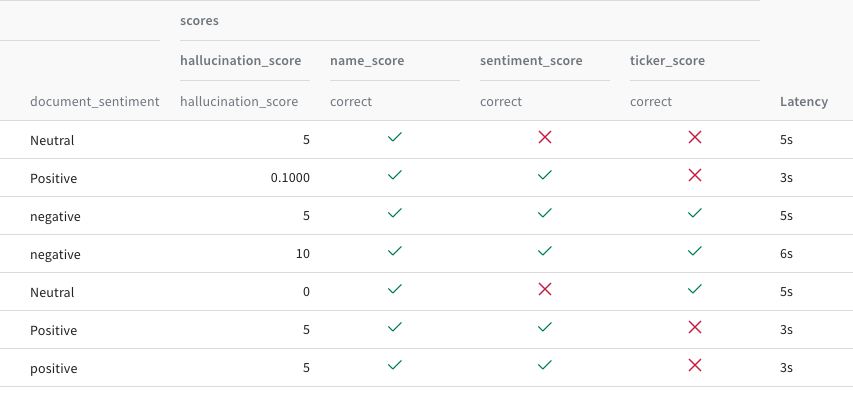The AI developer platform
Build models faster, fine-tune LLMs, develop GenAI applications with confidence, all in one system of record developers are excited to use.

The era of generative AI
The world’s leading AI teams trust Weights & Biases

A system of record developers want to use

Experiments
Track and visualize your ML experiments

Sweeps
Optimize your
hyperparameters

Launch
Package and run your
ML workflow jobs

Model Registry
Register and manage
your ML models

Automations
Trigger workflows
automatically
Models
Build & Fine-tune
models


Traces
Monitor and debug
LLMs and prompts
Weave
Develop GenAI
applications

Evaluations
Rigorous evaluations
of GenAI applications
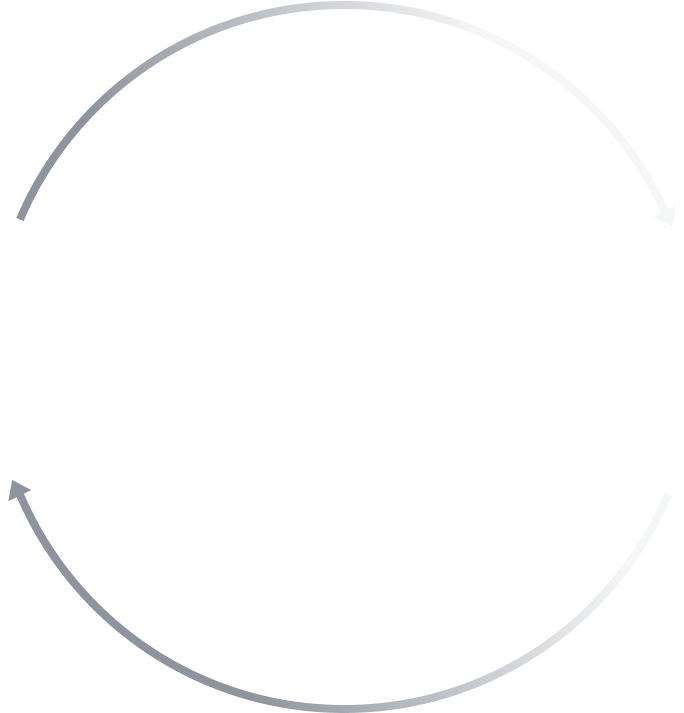
Integrate quickly, track & version automatically
- Track, version and visualize with just 5 lines of code
- Reproduce any model checkpoints
- Monitor CPU and GPU usage in real time
“We’re now driving 50 or 100 times more ML experiments versus what we were doing before.”
import wandb
# 1. Start a W&B run
run = wandb.init(project="my_first_project")
# 2. Save model inputs and hyperparameters
config = wandb.config
config.learning_rate = 0.01
# 3. Log metrics to visualize performance over time
for i in range(10):
run.log({"loss": loss})
import wandb
import os
# 1. Set environment variables for the W&B project and tracing.
os.environ["LANGCHAIN_WANDB_TRACING"] = "true" os.environ["WANDB_PROJECT"] = "langchain-tracing"
# 2. Load llms, tools, and agents/chains
llm = OpenAI(temperature=0)
tools = load_tools(["llm-math"], llm=llm)
agent = initialize_agent(
tools, llm, agent=AgentType.ZERO_SHOT_REACT_DESCRIPTION, verbose=True
)
# 3. Serve the chain/agent with all underlying complex llm interactions automatically traced and tracked
agent.run("What is 2 raised to .123243 power?")
import wandb
from llama_index import ServiceContext
from llama_index.callbacks import CallbackManager, WandbCallbackHandler
# initialise WandbCallbackHandler and pass any wandb.init args
wandb_args = {"project":"llamaindex"}
wandb_callback = WandbCallbackHandler(run_args=wandb_args)
# pass wandb_callback to the service context
callback_manager = CallbackManager([wandb_callback])
service_context = ServiceContext.from_defaults(callback_manager=
callback_manager)
import wandb
# 1. Start a new run
run = wandb.init(project="gpt5")
# 2. Save model inputs and hyperparameters
config = run.config
config.dropout = 0.01
# 3. Log gradients and model parameters
run.watch(model)
for batch_idx, (data, target) in enumerate(train_loader):
...
if batch_idx % args.log_interval == 0:
# 4. Log metrics to visualize performance
run.log({"loss": loss})
import wandb
# 1. Define which wandb project to log to and name your run
run = wandb.init(project="gpt-5",
run_name="gpt-5-base-high-lr")
# 2. Add wandb in your `TrainingArguments`
args = TrainingArguments(..., report_to="wandb")
# 3. W&B logging will begin automatically when your start training your Trainer
trainer = Trainer(..., args=args)
trainer.train()
from lightning.pytorch.loggers import WandbLogger
# initialise the logger
wandb_logger = WandbLogger(project="llama-4-fine-tune")
# add configs such as batch size etc to the wandb config
wandb_logger.experiment.config["batch_size"] = batch_size
# pass wandb_logger to the Trainer
trainer = Trainer(..., logger=wandb_logger)
# train the model
trainer.fit(...)
import wandb
# 1. Start a new run
run = wandb.init(project="gpt4")
# 2. Save model inputs and hyperparameters
config = wandb.config
config.learning_rate = 0.01
# Model training here
# 3. Log metrics to visualize performance over time
with tf.Session() as sess:
# ...
wandb.tensorflow.log(tf.summary.merge_all())
import wandb
from wandb.keras import (
WandbMetricsLogger,
WandbModelCheckpoint,
)
# 1. Start a new run
run = wandb.init(project="gpt-4")
# 2. Save model inputs and hyperparameters
config = wandb.config
config.learning_rate = 0.01
... # Define a model
# 3. Log layer dimensions and metrics
wandb_callbacks = [
WandbMetricsLogger(log_freq=5),
WandbModelCheckpoint("models"),
]
model.fit(
X_train, y_train, validation_data=(X_test, y_test),
callbacks=wandb_callbacks,
)
import wandb
wandb.init(project="visualize-sklearn")
# Model training here
# Log classifier visualizations
wandb.sklearn.plot_classifier(clf, X_train, X_test, y_train, y_test, y_pred, y_probas, labels,
model_name="SVC", feature_names=None)
# Log regression visualizations
wandb.sklearn.plot_regressor(reg, X_train, X_test, y_train, y_test, model_name="Ridge")
# Log clustering visualizations
wandb.sklearn.plot_clusterer(kmeans, X_train, cluster_labels, labels=None, model_name="KMeans")
import wandb
from wandb.xgboost import wandb_callback
# 1. Start a new run
run = wandb.init(project="visualize-models")
# 2. Add the callback
bst = xgboost.train(param, xg_train, num_round, watchlist, callbacks=[wandb_callback()])
# Get predictions
pred = bst.predict(xg_test)
The leading AI developer platform that provides value to your entire team
The user experience that makes redundant work disappear
Track every detail of your ML pipeline automatically. Visualize results with relevant context. Drag & drop analysis to uncover insights – your next best model is just a few clicks away
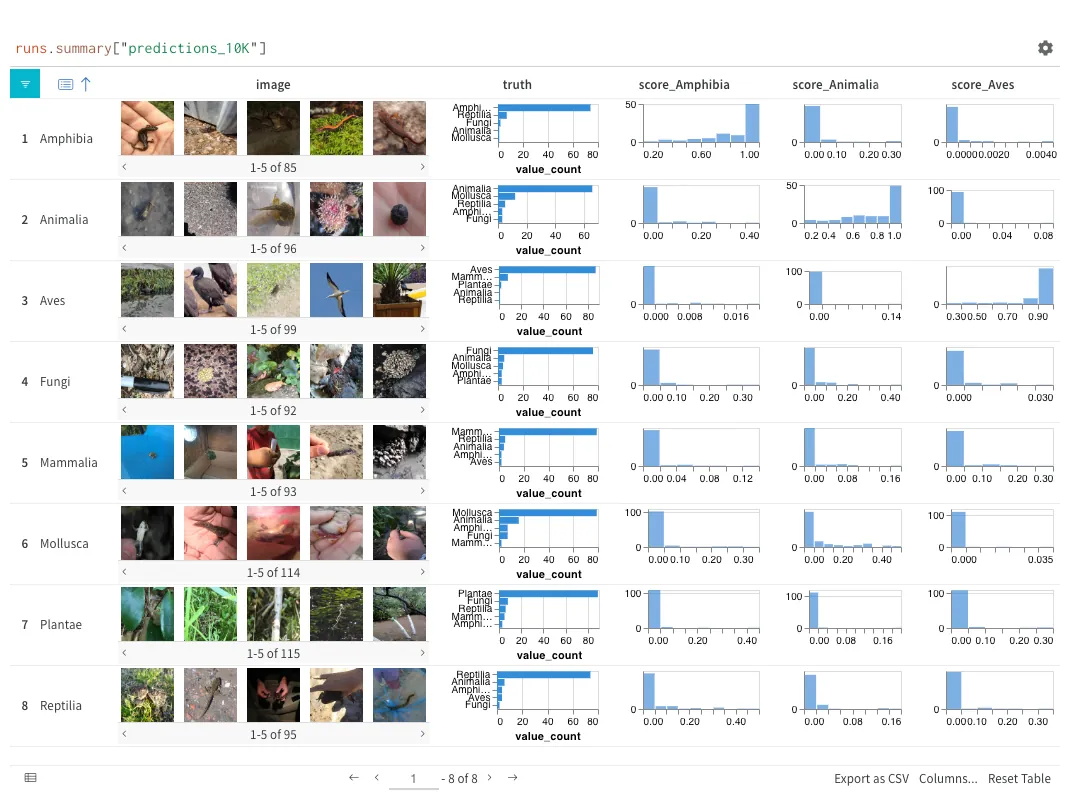
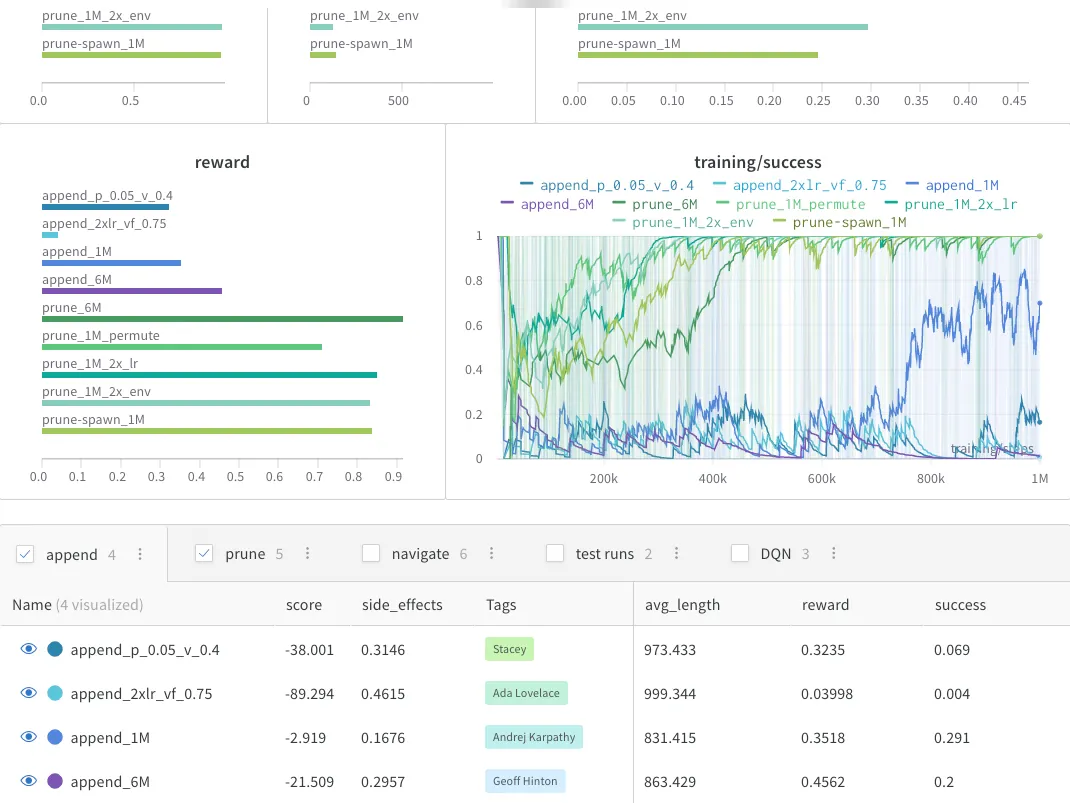
The ML workflow co-designed with ML engineers
Build streamlined ML workflows incrementally. Configure and customize every step. Leverage intelligent defaults so you don’t have to reinvent the wheel.
A system of record that makes all histories reproducible and discoverable
Reproduce any experiment instantly. Track model evolution with changes explained along the way. Easily discover and build on top of your team’s work.
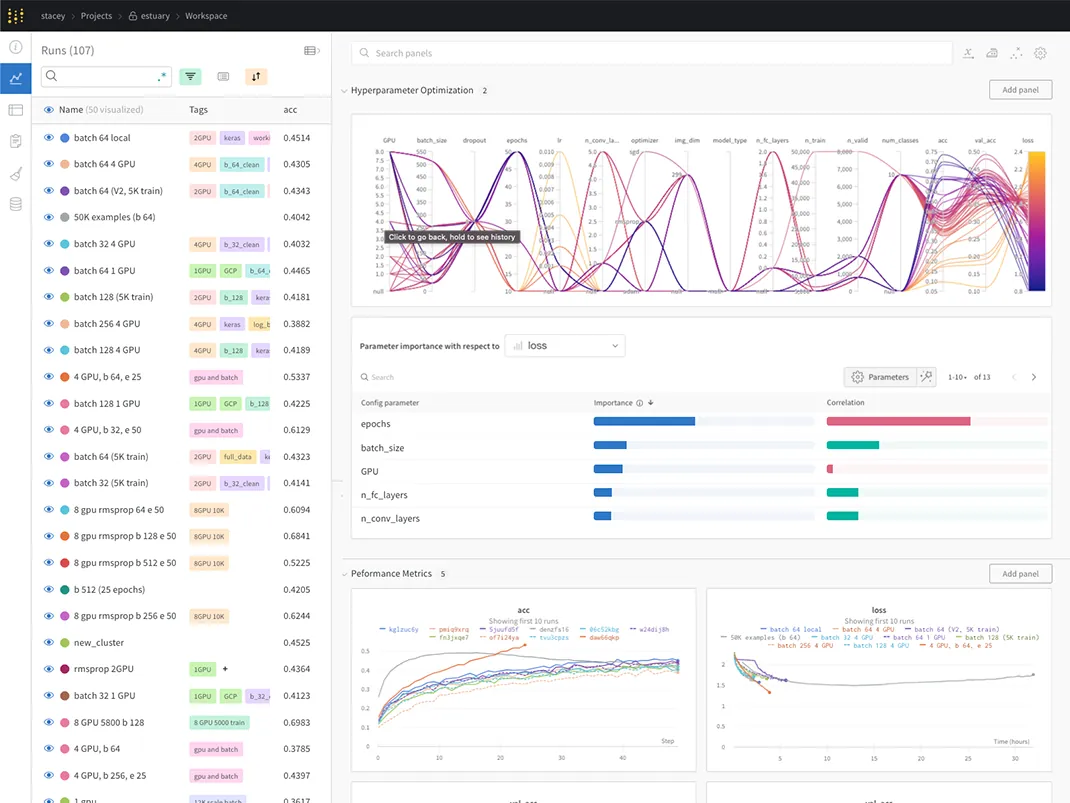
Flexible deployments, easy integration
Deploy W&B to your infrastructure of choice, W&B-managed or Self-managed available. Easily integrate with your ML stack & tools with no vendor lock-in.
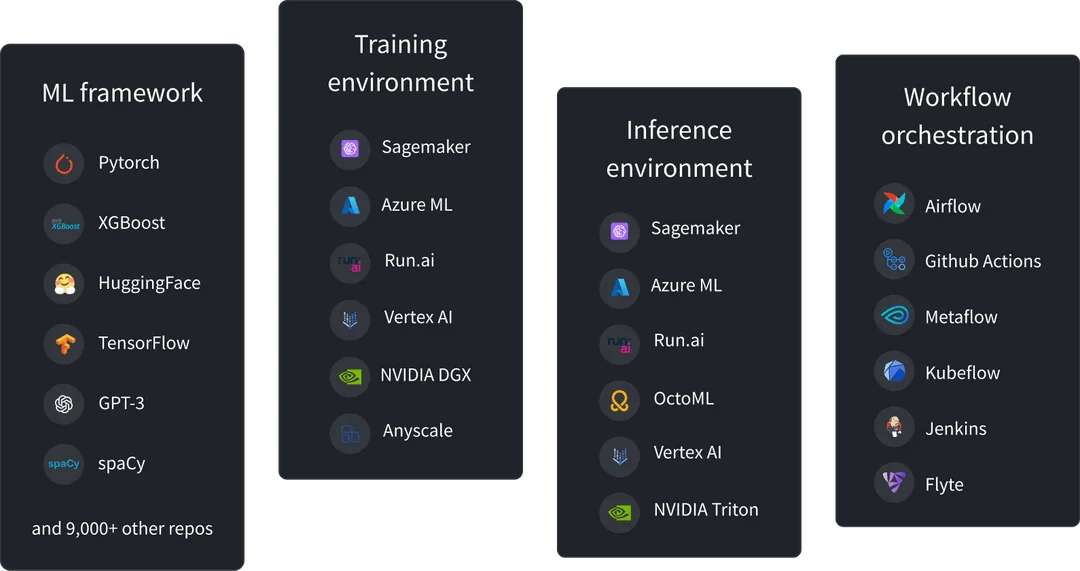
Bridge ML Practitioners and MLOps
Automate and scale ML workloads in one collaborative interface – ML practitioners get the simplicity, MLOps get the visibility.
Scale ML production with governance
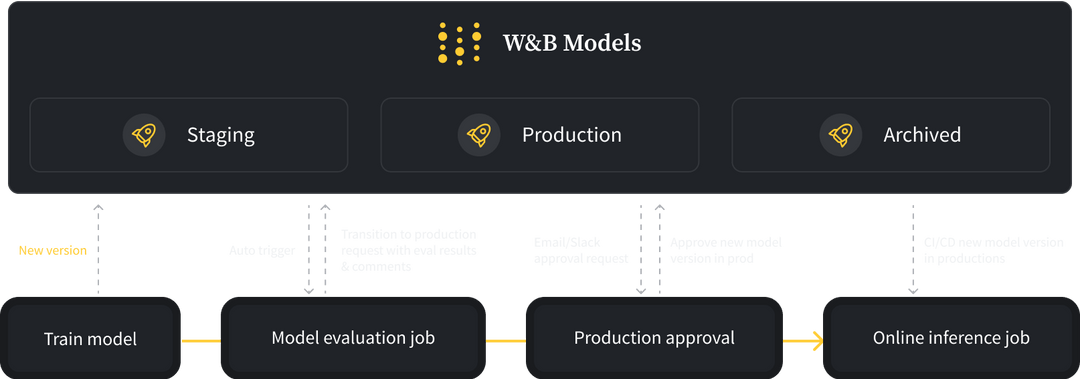
The user experience that makes redundant work disappear
Track every detail of your ML pipeline automatically. Visualize results with relevant context. Drag & drop analysis to uncover insights – your next best model is just a few clicks away
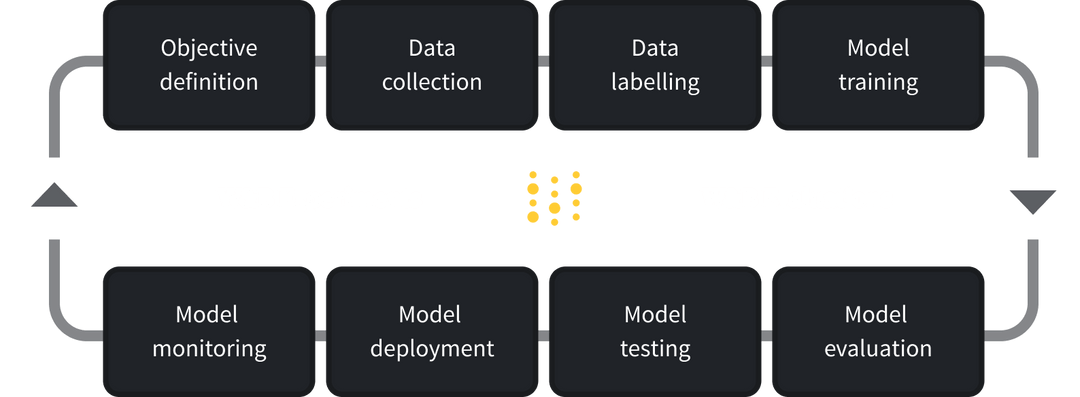

Any industry, any use case
Customers from diverse industries trust W&B with a variety of ML use cases. From autonomous vehicle to drug discovery and from customer support automation to generative AI, W&B’s flexible workflow handles all your custom needs.
Let the team focus on value-added activities
Only focuses on core ML activities – W&B automatically take care of boring tasks for you: reproducibility, auditability, infrastructure management, and security & governance.
Future-proof your ML workflow – W&B co-designs with OpenAI and other innovators to encode their secret sauce so you don’t need to reinvent the wheel.
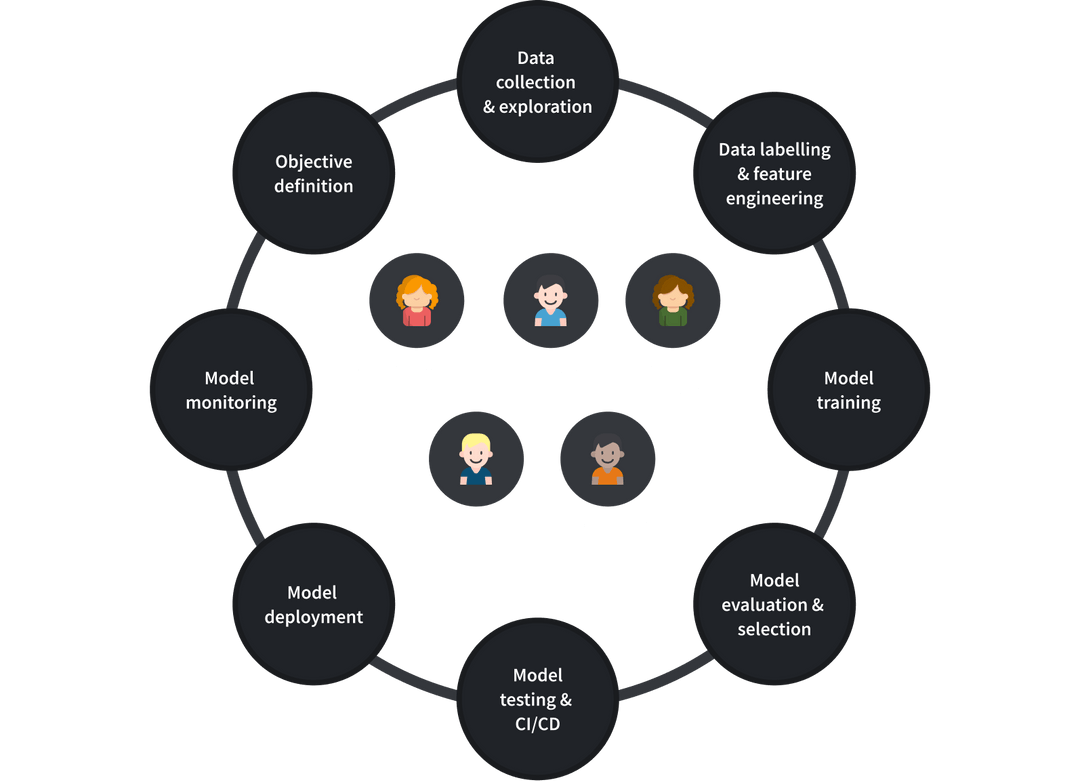
Designed to help software developers deploy GenAI applications with confidence
The tools developers need to evaluate, understand and iterate on dynamic, non-deterministic large language models.
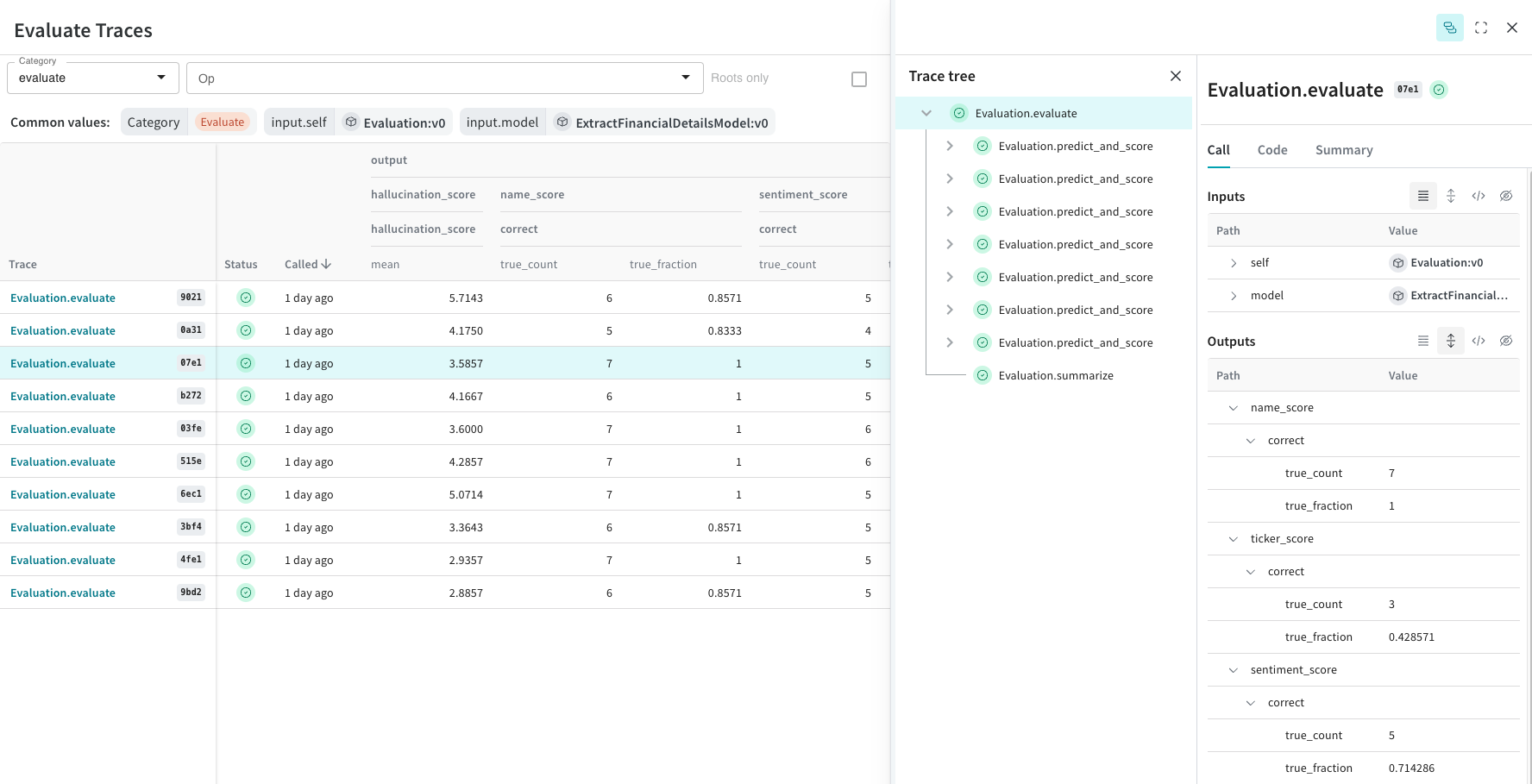

Automatically log all inputs, outputs and traces for simple debugging
Weave captures all input and output data and builds a tree to give developers full observability and understanding about how data flows through their applications.
Rigorous evaluation frameworks to deliver robust LLM performance
Compare different evaluations of model results against different dimensions of performance to ensure applications are as robust as possible when deploying to production.
